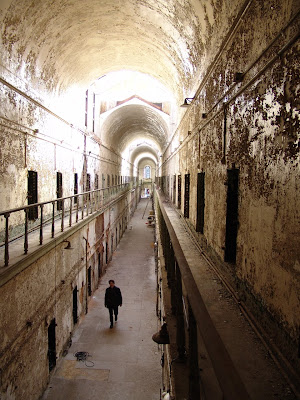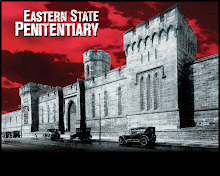- Alaina
John Haviland: internationally renowned 19th-century architect. Mastermind of the most influential prison ever built. Enduring show-off.
I can’t help but think it when I walk down Cellblock 7, completed in 1836 and recently re-opened for 2010 after a year of vital plaster repairs.
Cellblocks 4 through 6 have second-story cells directly flush with those under. A plain, practical iron walkway juts from each side of the second floor. But Seven’s second-story cells are set back from the first floor, making a comfortable walkway with a real floor. Flower-sculpted cast-iron railing posts make a strikingly elegant balustrade (Haviland personally owned the design for these balusters) which embellishes the beautiful, ingeniously fitted iron staircases. Seven is ESP’s longest, widest block, and it has a lofty, majestic, sunlit peace.
But who was it all for? Was it meant to underscore the civil and spiritual ideals of the first penitentiary? If so, when did the inmates, locked in their cells, get to contemplate it? Was this grandeur meant to inspire the guards or impress outside dignitaries and journalists?
Or perhaps, in designing this monument to not only the problems of civilization but also to a human, social and spiritual ideal, Haviland could not help indulging his taste for beauty – despite a prison’s grim daily function. If I had Haviland’s talent and notoriety, would I resist such splendid flourishes?
Maybe I like Cellblock 7 so much because Haviland really designed it to wow me and you and everyone else who will ever see it. He might have been a bit of a show-off – but I’m not complaining.


No comments:
Post a Comment